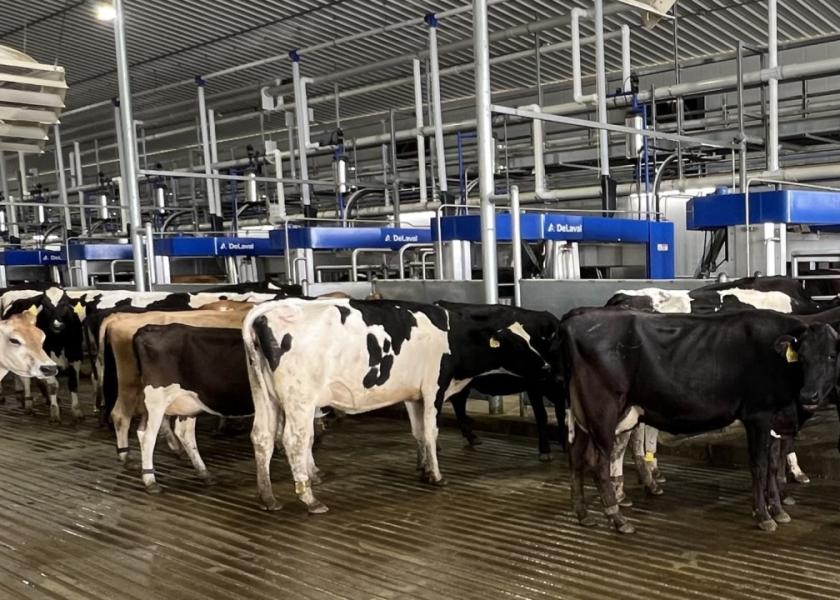DeLaval Launches New Robotic Batch Milking System for Large Herds

As a new approach to robotic milking for larger dairy operations, DeLaval has announced the launch of their new VMS™ Batch Milking system, a method advancement in robotic milking technology that helps reduce labor and increase efficiency.
According to the company, this method, which has gained global traction with more than 10 installations milking a total of 10,000 cows worldwide, involves dividing herds into groups and bringing them to the milking center, similar to a traditional parlor or rotary.
The facility layout features multiple rows of VMS units, resembling a parallel parlor. After milking, cows exit the robots and follow an exit lane, guided by a selection gate to a desired area, whether that be a sorting area or back to their original pen, all without the need for additional labor. Farms accustomed to conventional milking setups can seamlessly transition to robotics with VMS batch milking and still retain many of their familiar routines and practices, DeLaval notes.
“Reducing labor requirements to milk the same number of cows as a traditional parlor and the individual cow data captured by DeLaval VMS makes VMS batch milking a seamless combination of precision robotic technology and traditional milking routine familiarity,” says Jason French, VMS solution manager at DeLaval. “This approach is the next accessible step for dairy farmers looking to transform and improve their operational efficiency.”
Rancho Pepper Dairy, the first farm in the U.S. to adopt VMS Batch Milking, installed 22 DeLaval VMS V300 units in 2022 to efficiently milk 2,000 cows. Dawn Dial, dairy manager at Rancho Pepper Dairy, praises the system for its ability to capture individual cow data and minimize required labor.
“These cows are very relaxed, and I feel that they are more relaxed than any parallel [parlor] I have ever seen in my life,” Dial says. “I would definitely do this again.”
For more on robotics, read:
- Large Herds Share the Big Benefits of Switching to Robotic Milking
- Technology Helps Vermont Family Meet Herd and Family Goals
- Breeding the Right Cow for Robots
- Automation 'Worth the Wait' for this New York Dairy
- DeLaval Launches New Teat Spray Robot Featuring Faster Design







